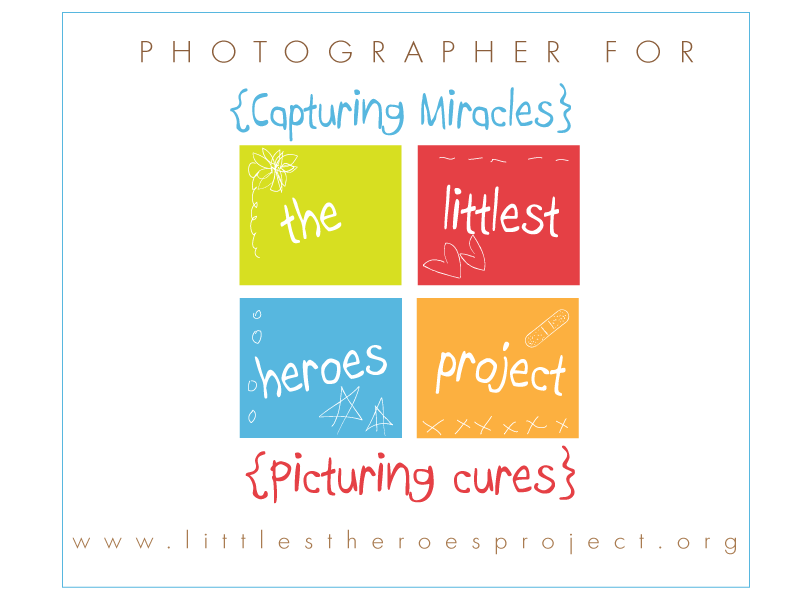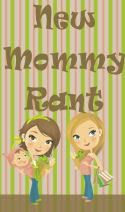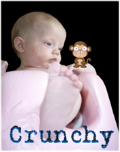
Babywearing
From Wikipedia, the free encyclopedia
Babywearing is the practice of wearing or carrying a baby or child in a sling or other form of carrier. Babywearing is far from new and has been practiced for centuries around the world. In the industrialized world babywearing has gained popularity, partly under influence of advocates of attachment parenting, however, not all parents who babywear consider themselves attachment parents. Babywearing is a form of baby transport.
Contents[show]
1 Benefits of babywearing
2 Practicality of babywearing
3 Infant feeding and babywearing
4 Babywearing safety considerations
5 References
Benefits of babywearing
Dr. William Sears, a pediatrician, coined the phrase attachment parenting. One of Sears' principles of attachment parenting is babywearing and he attributes many benefits to babywearing and the in-arms style of parenting.
From Wikipedia, the free encyclopedia
Babywearing is the practice of wearing or carrying a baby or child in a sling or other form of carrier. Babywearing is far from new and has been practiced for centuries around the world. In the industrialized world babywearing has gained popularity, partly under influence of advocates of attachment parenting, however, not all parents who babywear consider themselves attachment parents. Babywearing is a form of baby transport.
Contents[show]
1 Benefits of babywearing
2 Practicality of babywearing
3 Infant feeding and babywearing
4 Babywearing safety considerations
5 References
Benefits of babywearing
Dr. William Sears, a pediatrician, coined the phrase attachment parenting. One of Sears' principles of attachment parenting is babywearing and he attributes many benefits to babywearing and the in-arms style of parenting.
Claimed benefits of babywearing include:
Mothers' progesterone (mothering hormone) is increased through physical contact with the infant, leading to a more intimate maternal bond, easier breastfeeding and better care, thus lowering the incidence of postpartum depression and psychosomatic illness[citation needed].
Infants who are carried are calmer because all of their primal/survival needs are met. The caregiver can be seen, heard, smelled, touched, tasted, provide feeding and the motion necessary for continuing neural development, gastrointestinal and respiratory health and to establish balance (inner ear development) and muscle tone is constant.[1]
Infants are more organized. Parental rhythms (walking, heartbeat, etc.) have balancing and soothing effects on infants.
Infants are "humanized" earlier by developing socially. Babies are closer to people and can study facial expressions, learn languages faster and be familiar with body language.[2]
Contrary to western cultural myths, independence is established earlier.[1]
Attachment between child and caregiver is more secure.[3]
Decreases risk of positional plagiocephaly ("flat head syndrome") caused by extended time spent in a car seat and by sleeping on the back. Sleeping on the back is recommended to decrease the risk of SIDS. Cranial distortion resulting from non-vehicular time in car seats has shown to be more severe than in children who develop plagiocephaly from back-lying on a mattress. [4] Concern over plagiocephaly has also led the American Academy of Pediatrics to recommend that infants “should spend minimal time in car seats (when not a passenger in a vehicle) or other seating that maintains supine positioning. [5] None of the babywearing positions require infants to lie supine while being carried. Infants can even be worn while they sleep, also decreasing sleeping time spent in a supine position.
Practicality of babywearing
A traditional Nez Perce cradleboard (1911).
Babywearing allows the wearer to have two free hands to accomplish tasks such as laundry while caring for the baby's need to be held or breastfed. Babywearing offers a safer alternative to placing a car seat on top of a shopping cart. It also allows children to be involved in social interactions and to see their surroundings as an adult would.
Mothers' progesterone (mothering hormone) is increased through physical contact with the infant, leading to a more intimate maternal bond, easier breastfeeding and better care, thus lowering the incidence of postpartum depression and psychosomatic illness[citation needed].
Infants who are carried are calmer because all of their primal/survival needs are met. The caregiver can be seen, heard, smelled, touched, tasted, provide feeding and the motion necessary for continuing neural development, gastrointestinal and respiratory health and to establish balance (inner ear development) and muscle tone is constant.[1]
Infants are more organized. Parental rhythms (walking, heartbeat, etc.) have balancing and soothing effects on infants.
Infants are "humanized" earlier by developing socially. Babies are closer to people and can study facial expressions, learn languages faster and be familiar with body language.[2]
Contrary to western cultural myths, independence is established earlier.[1]
Attachment between child and caregiver is more secure.[3]
Decreases risk of positional plagiocephaly ("flat head syndrome") caused by extended time spent in a car seat and by sleeping on the back. Sleeping on the back is recommended to decrease the risk of SIDS. Cranial distortion resulting from non-vehicular time in car seats has shown to be more severe than in children who develop plagiocephaly from back-lying on a mattress. [4] Concern over plagiocephaly has also led the American Academy of Pediatrics to recommend that infants “should spend minimal time in car seats (when not a passenger in a vehicle) or other seating that maintains supine positioning. [5] None of the babywearing positions require infants to lie supine while being carried. Infants can even be worn while they sleep, also decreasing sleeping time spent in a supine position.
Practicality of babywearing
A traditional Nez Perce cradleboard (1911).
Babywearing allows the wearer to have two free hands to accomplish tasks such as laundry while caring for the baby's need to be held or breastfed. Babywearing offers a safer alternative to placing a car seat on top of a shopping cart. It also allows children to be involved in social interactions and to see their surroundings as an adult would.
Many sling users have found that it is easier on the back and shoulders than carrying their infant in a car seat. The weight of the child is spread more evenly across the upper body.
Slings can also be a fashion statement. They come in many different designs and colors and are available in many different types of materials, including silk, hemp, cotton, wool, fleece, and flax/linen.
Infant feeding and babywearing
Breastfeeding and babywearing often go hand in hand. Many baby slings and other carriers offer mothers privacy and for many mothers, the option of nursing hands-free while tending to other activities or household chores. Not all mothers can nurse hands-free in a baby carrier. Large-breasted mothers and mothers of small or hypo tonic infants may need to support the breast or help maintain proper positioning of baby's head or body. Even so, a properly adjusted baby carrier can help reduce arm strain and allow a mother more freedom of movement while nursing, even if it does not allow her to be completely hands-free.
Slings can also be a fashion statement. They come in many different designs and colors and are available in many different types of materials, including silk, hemp, cotton, wool, fleece, and flax/linen.
Infant feeding and babywearing
Breastfeeding and babywearing often go hand in hand. Many baby slings and other carriers offer mothers privacy and for many mothers, the option of nursing hands-free while tending to other activities or household chores. Not all mothers can nurse hands-free in a baby carrier. Large-breasted mothers and mothers of small or hypo tonic infants may need to support the breast or help maintain proper positioning of baby's head or body. Even so, a properly adjusted baby carrier can help reduce arm strain and allow a mother more freedom of movement while nursing, even if it does not allow her to be completely hands-free.
Babywearing can help premature babies and babies who are slow weight gainers to gain weight at a faster rate.[6][7] Since the baby is held up close to the mother, the baby will be able to be nursed more often and often for longer intervals. Kangaroo care is well-studied and has shown clear benefits to premature and ill infants.[2]
Not all parents find breastfeeding in a sling or carrier easy. It is important, before attempting to breastfeed in a carrier, to first master the art of breastfeeding without a carrier. Latch and position are vital, and it is important to establish these first before adding a carrier to the mix. Where breastfeeding difficulties exist, babywearing can simplify the other tasks of parenting by allowing a parent free hands to deal with breast pumps, bottles and other supplementation devices.
Some parents prefer, even with the best carriers, to take time out and sit down to nurse a baby. Some babies may reflexively clamp down when nursing while a parent moves around, so nursing while babywearing is not always entirely comfortable. Individual experience will vary radically not only from parent to parent, but also from baby to baby, even within the same family. Some babies nurse very well in slings and carriers, others do not.
Where breastfeeding fails or is not possible, babywearing can aid attachment by encouraging closeness during bottle feeding and freeing at least one hand. Daycare providers and foster parents often find that babywearing allows them to better meet the needs of multiple children by freeing hands during times when babies need to be held.
Babywearing safety considerations
Parents who babywear must be aware of external hazards in the environment, mostly relating to floor or ground conditions such as curbs, debris, icy sidewalks, etc. As the baby has more freedom of movement and is closer to the adult point of view in a sling, compared to the knee's eye view of a stroller, parents must also watch to prevent the baby from grabbing hot drinks or other dangerous items.
Babywearing safety considerations
Parents who babywear must be aware of external hazards in the environment, mostly relating to floor or ground conditions such as curbs, debris, icy sidewalks, etc. As the baby has more freedom of movement and is closer to the adult point of view in a sling, compared to the knee's eye view of a stroller, parents must also watch to prevent the baby from grabbing hot drinks or other dangerous items.
Proper position in the sling/carrier is important for the infant's hip, pelvis and spine growth. Several sources express concern that carriers which put all of a baby's weight on a narrow band of fabric at the crotch may cause problems with spinal growth, and advocate carriers which disperse most of the infant's weight between the hips and thighs. There is much debate on this in the babywearing community since there has not been sufficient research to show that this could be an issue for babies who do not already have a hip or spine condition which would require special consideration.
In general, when wearing a baby it is important to stay attentive to the baby's interaction with the environment. Parents need a little more space to turn around to avoid bumping the baby into counters and doorways. Babies on the back may be able to reach things that the wearer cannot see. Carriers must be fit snugly and properly to avoid an active baby wiggling out, and it is generally recommended with most carriers to avoid wearing an uncooperative child on the back. Babywearing can improve safety, especially in crowded areas such as airports, by keeping a child who might otherwise be able to run into a crowd safely attached to the parent.
A parent who trips and falls while wearing a baby is often better able to "catch" themselves and is less likely to injure themselves, avoiding dropping the child and less likely to drop the child at all. Very occasionally falls will result in injury to a child and may be compounded by the weight of a parent pressing against the child or against the fabric holding the child.
A parent who trips and falls while wearing a baby is often better able to "catch" themselves and is less likely to injure themselves, avoiding dropping the child and less likely to drop the child at all. Very occasionally falls will result in injury to a child and may be compounded by the weight of a parent pressing against the child or against the fabric holding the child.
Knotted carriers should be tied snugly. Several knots are considered acceptable, the square knot or reef knot is usually recommended, granny knots will work with most fabrics which are not excessively slippery, and some fabrics may be twisted and tucked in lieu of knotting, but this is generally considered an advanced skill and should be undertaken only with extensive babywearing experience with care given to avoid slippage. Slip knots should generally not be used as they can come undone more easily, especially around toddlers and small children.
Where young infants and newborns are being worn in "cradle" or other horizontal positions, it is important to be alert to the baby's head position to avoid the baby's head being pushed chin-to-chest and constricting airway. In pouches and other carriers intended for use with the "cradle hold", a towel or small pillow may be placed under the baby's back to improve positioning. One must make sure that all worn babies have good color and are able to breathe easily, and avoid overdressing worn babies, who will stay warm just from being in contact with the parent in most cases. Parents must avoid putting blankets or other fabric in the vicinity of a child's face in or out of a carrier.
References
^ a b Morris, D. (1992). What Comforts a Baby? In Babywatching (pp 80-82). New York: Crown Publishers Inc.
^ a b Kitzinger, Sheila. (1989). The Crying Baby. Penguin Books.
^ Anisfeld, E., Casper, V., Nozyce, M., & Cunningham, N. (Oct., 1990). Does Infant Carrying Promote Attachment? An Experimental Study of the Effects of Increased Physical Contact on the Development of Attachment. Child Development, Vol. 61, No. 5, 1617-1627.
^ Littlefield, Timothy R. "Car Seats, Infant Carriers, and Swings: Their Role in Deformational Plagiocephaly," Journal of Prosthetics & Orthotics 15, no. 3 (2003): 102-106.
^ John Persing, MD, et al., American Academy of Pediatrics Committee on Practice and Ambulatory Medicine, Section on Plastic Surgery and Section on Neurological Surgery, "Prevention and Management of Positional Skull Deformities in Infants," Pediatrics 112, no. 1 (July 2003): 199-202..
^ Hasselmeyer, E. G. (1964). The premature neonate's response to handling. Journal of the American Nursing Association, I. 15-24.
^ Solkoff, N, et al. (1969). Effects of handling on the subsequent development of premature infants. Developmental Psychology, 1(6). 765-768.
-
Where young infants and newborns are being worn in "cradle" or other horizontal positions, it is important to be alert to the baby's head position to avoid the baby's head being pushed chin-to-chest and constricting airway. In pouches and other carriers intended for use with the "cradle hold", a towel or small pillow may be placed under the baby's back to improve positioning. One must make sure that all worn babies have good color and are able to breathe easily, and avoid overdressing worn babies, who will stay warm just from being in contact with the parent in most cases. Parents must avoid putting blankets or other fabric in the vicinity of a child's face in or out of a carrier.
References
^ a b Morris, D. (1992). What Comforts a Baby? In Babywatching (pp 80-82). New York: Crown Publishers Inc.
^ a b Kitzinger, Sheila. (1989). The Crying Baby. Penguin Books.
^ Anisfeld, E., Casper, V., Nozyce, M., & Cunningham, N. (Oct., 1990). Does Infant Carrying Promote Attachment? An Experimental Study of the Effects of Increased Physical Contact on the Development of Attachment. Child Development, Vol. 61, No. 5, 1617-1627.
^ Littlefield, Timothy R. "Car Seats, Infant Carriers, and Swings: Their Role in Deformational Plagiocephaly," Journal of Prosthetics & Orthotics 15, no. 3 (2003): 102-106.
^ John Persing, MD, et al., American Academy of Pediatrics Committee on Practice and Ambulatory Medicine, Section on Plastic Surgery and Section on Neurological Surgery, "Prevention and Management of Positional Skull Deformities in Infants," Pediatrics 112, no. 1 (July 2003): 199-202..
^ Hasselmeyer, E. G. (1964). The premature neonate's response to handling. Journal of the American Nursing Association, I. 15-24.
^ Solkoff, N, et al. (1969). Effects of handling on the subsequent development of premature infants. Developmental Psychology, 1(6). 765-768.
-

























1 comment:
I agree, I agree annnnnnd I AGREE!! Babywearing is awesome!
Post a Comment